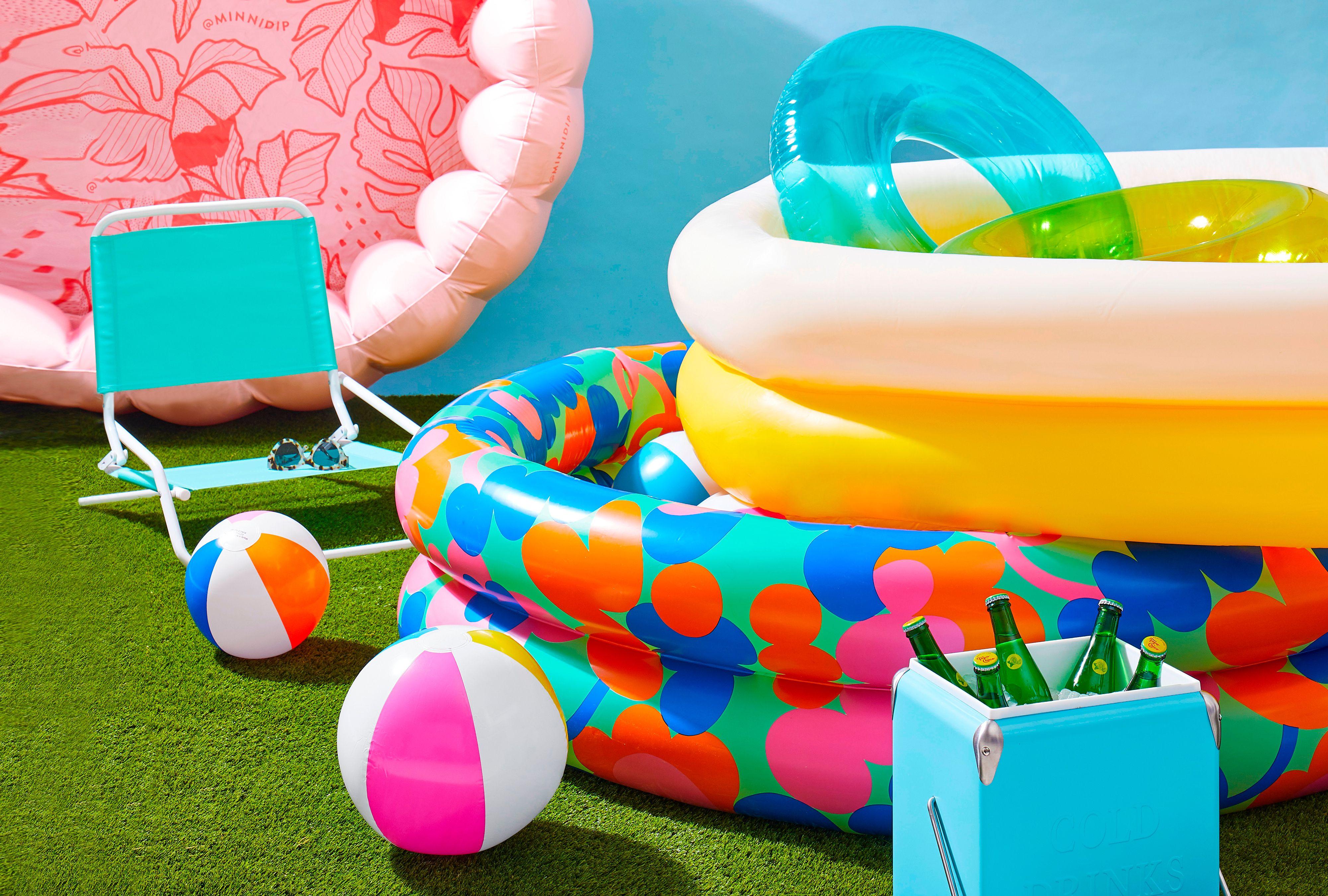There’s nothing better than cooling off and relaxing in a backyard inflatable pool on a hot summer day—but keeping that water clean and safe is important. If you’ve ever wondered how long you can leave water in a kiddie pool, how often it needs cleaning, or what to do with it at the end of the season, you’re not alone. The good news? With just a few simple habits, you can keep your inflatable pool fresh, safe, and clean all summer long.
Key Takeaways
Clean and refresh water frequently—change water daily or every 1–2 days to maintain hygiene.
Use simple, safe cleaning methods. Stick to kid-friendly options like vinegar spray and baking soda for regular cleanings, and always rinse thoroughly.
At the end of summer, fully clean, dry, deflate, and inspect the pool before folding it loosely and storing in a cool, dry place to extend its life.
1. Smart Set-Up
Choose a location in your yard that’s flat and soft. If you can’t put it on grass, think about investing in a padded patio mat to protect the bottom from rips or punctures. Patio mats can also make the pool more comfortable for lounging, and create a soft base for toddlers or small children to play on. If you’re setting up on grass, make sure the area is void of sharp objects or rocks that could poke through the pool. Better yet, situate the pool under a tree or in partial shade to keep the water cool and discourage algae. To inflate, use a manual or electric air pump, but be careful to not over-inflate. A little give makes the pool safer and more durable.
Related
2. Easy-Care Maintenance
Keeping inflatable pool water clean is probably the most important inflatable pool safety precaution. Daily maintenance, the right cleaning products, and proper water changing methods will help ensure a safe, pool stress-free summer, and extend the longevity of your pool.
Clean the pool daily: Use a small bucket or container full of fresh water as a foot-rinse station. Have all kids or swimmers dip their feet in the water before entering the pool. After each use, skim out leaves, bugs, and dirt with a small pool net or cup. Always cover the pool when not in use with a fitted plastic or vinyl cover, or even an extra fitted bedsheet.
Change the water frequently: Keeping the water clean is probably the most important (and most-asked) question when it comes to inflatable pool safety. For best practice: change the water daily or every 1-2 days, depending the clarity of the water. Dump and refill after every use if there was excessive dirt, diaper leakage, or any standing water for more than a day.
Use safe cleaning products: White vinegar is great to prevent slimy buildup. Make a white vinegar spray (1 part vinegar to 3 parts water) to spray and wipe down the walls after draining the pool. Use a baking soda paste to scrub any tough spots. Avoid chlorine or harsh chemicals, which can be harmful to skin and toddlers if swallowed.
These safety precautions might be obvious, but reminders for pool safety (even small kiddie pools) are important. So: never leave toddlers unsupervised, even in shallow water. Always empty or cover the pool when not in use to prevent accidents and mosquito breeding. Finally, never reuse dirty water as toddlers and pets might accidentally swallow it.
3. Keep Water Fresher, Longer
If you’ve taken all precautions and are hoping to get one more day out of the pool water, here’s how to try. Always use a pool cover when the pool is not in use, and keep the pool in the shade to reduce algae growth and evaporation. If you have toddlers or small children, limit use to clean, diapered kiddos, and always rinse off toys before bringing them into the pool. If the water looks dirty, cloudy, or murky at all, play it on the safe side and change the water before re-use.
4. Weekly Deep-Clean
Daily pool maintenance and cleaning is important for water safety, but deep-cleaning the pool once a week is the best way to extend the longevity and usability of your pool. Once a week, or between-fill cleanings, scrub the interior of the pool with mild dish soap and warm water. A vinegar solution also works well for natural disinfection. Rinse thoroughly with a hose or clean water. Let air dry completely in full sun to prevent mildew.
End-of-Summer Pool Storage Tips
At the end of the summer, a final deep clean is imperative to reusing the pool next summer and preventing bacteria build-up. After the final use, drain and rinse the pool. Sanitize with a vinegar solution or a diluted bleach rinse (1 tablespoon bleach per gallon of water). Scrub all the folds, creases, and corners. Rinse thoroughly and let dry in full sun.
Inspect the pool for small punctures, discoloration, or mold. If necessary, patch holes with a vinyl patch kit. After the pool is fully clean, dry, and repaired, deflate completely (a reverse air pump works wonderfully here) and fold gently. Store the pool in a large, clean, dry tote or bag in an indoor close or garage shelf, keeping it away from heat, sunlight, or moisture.



